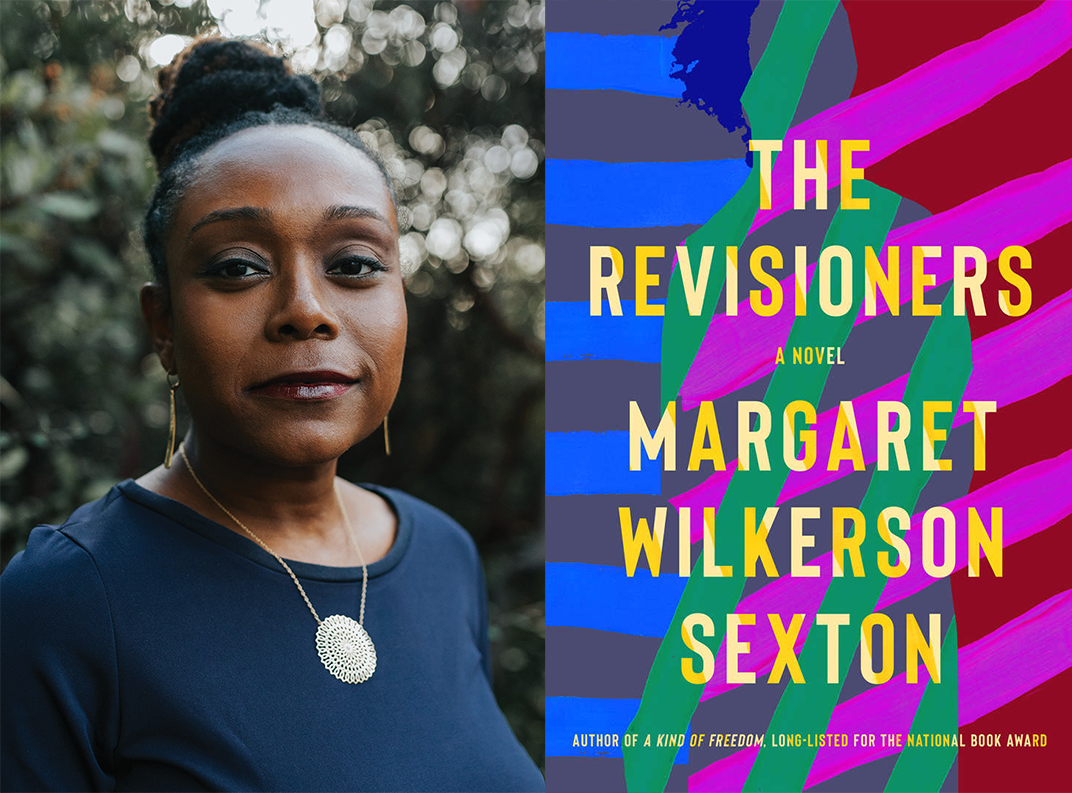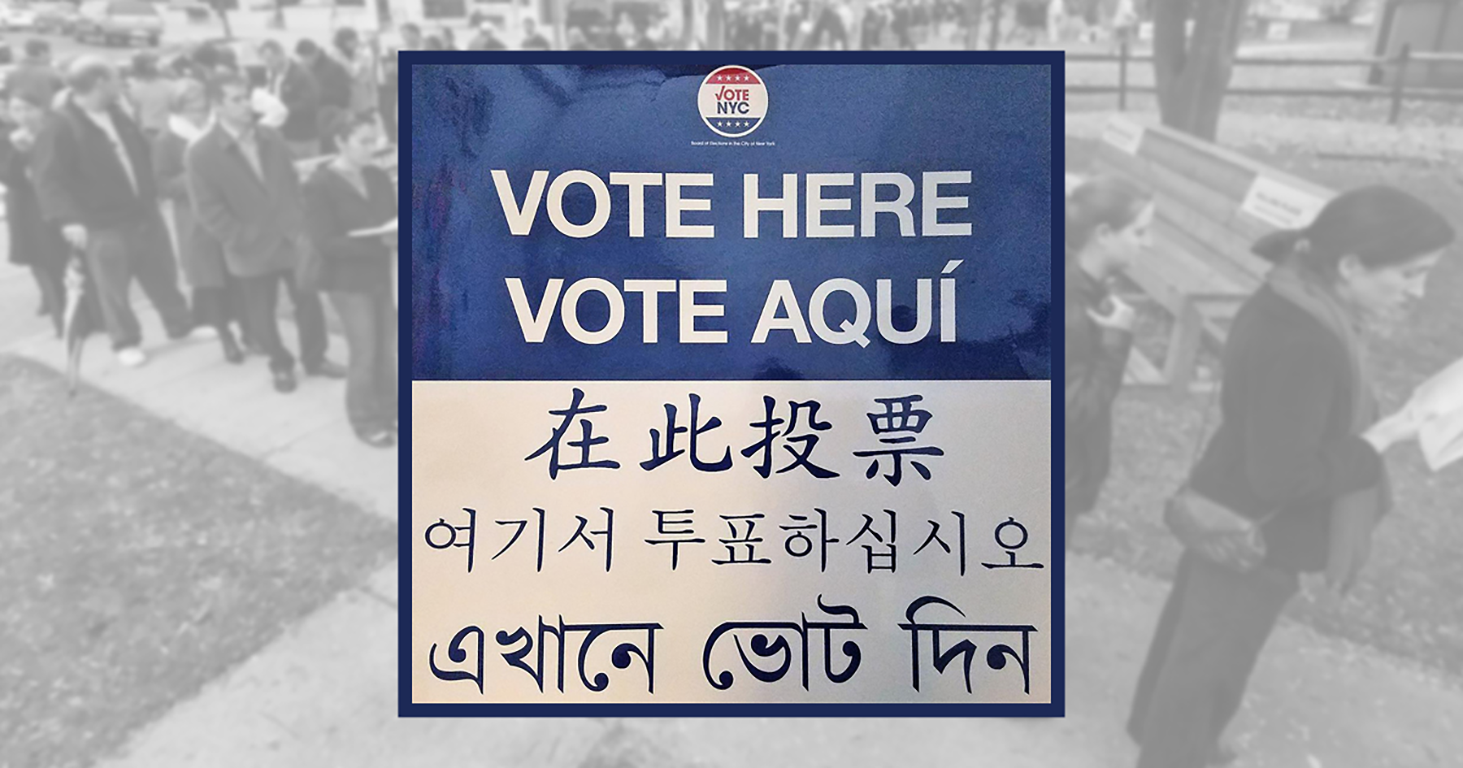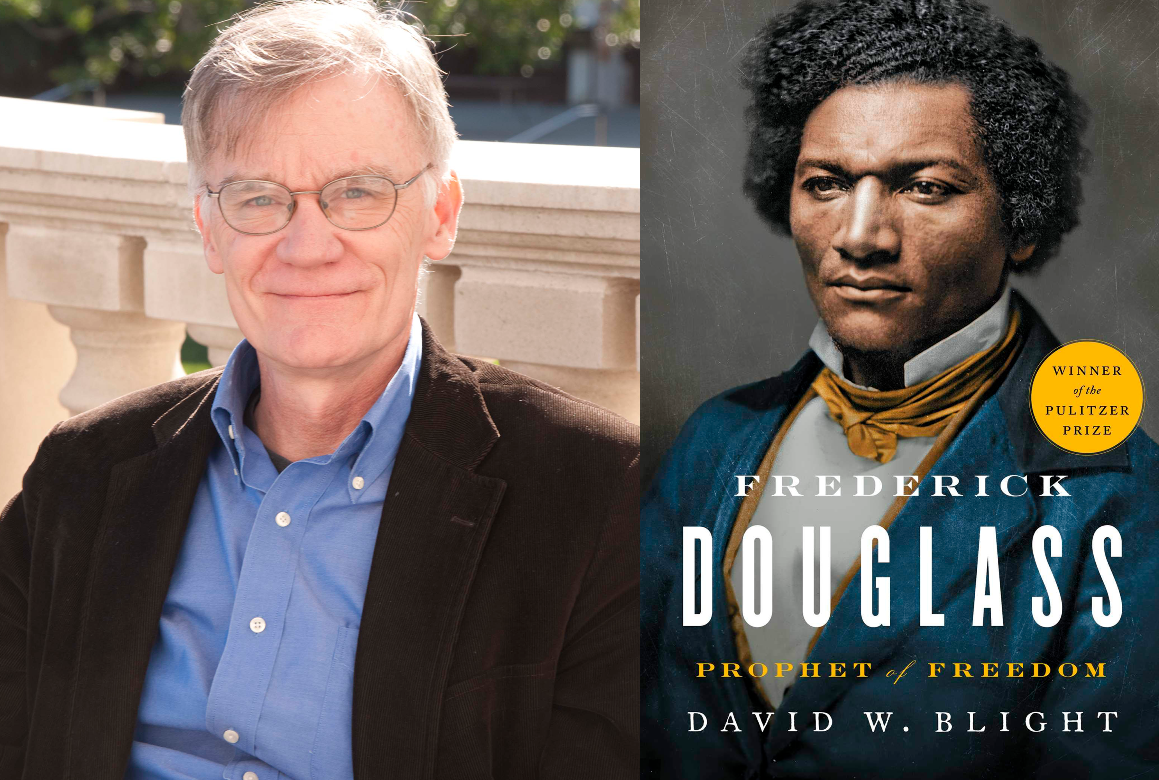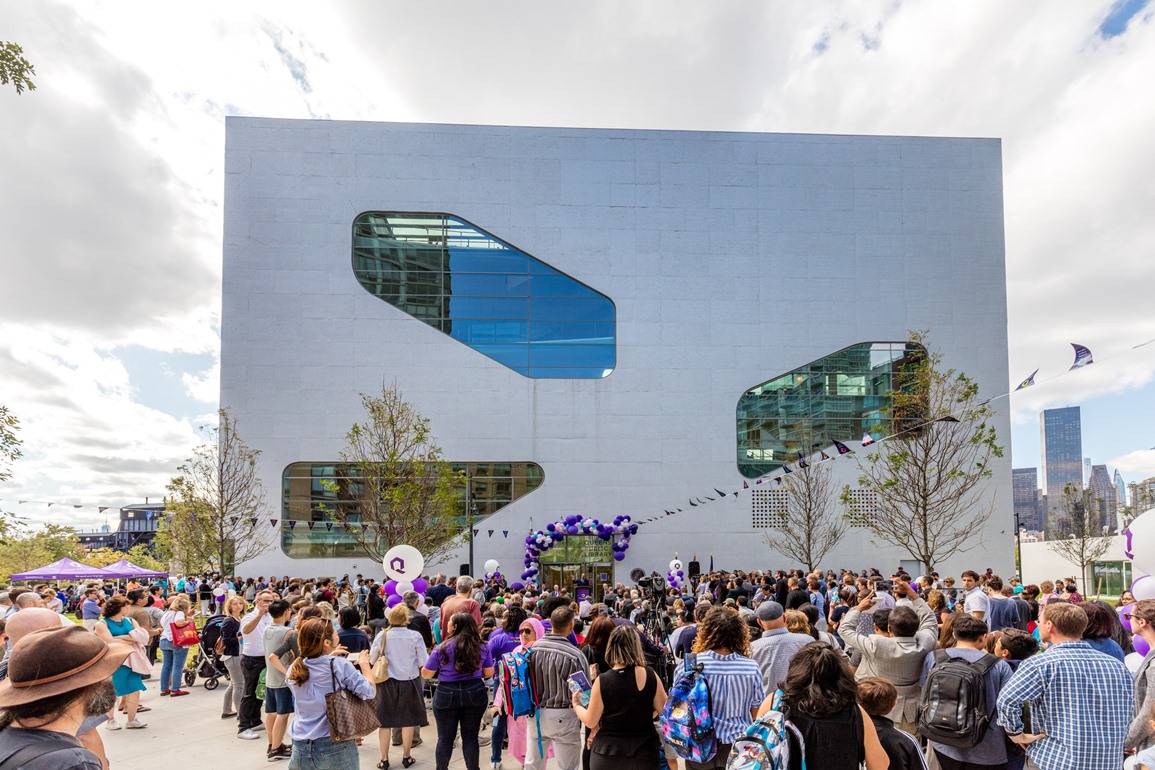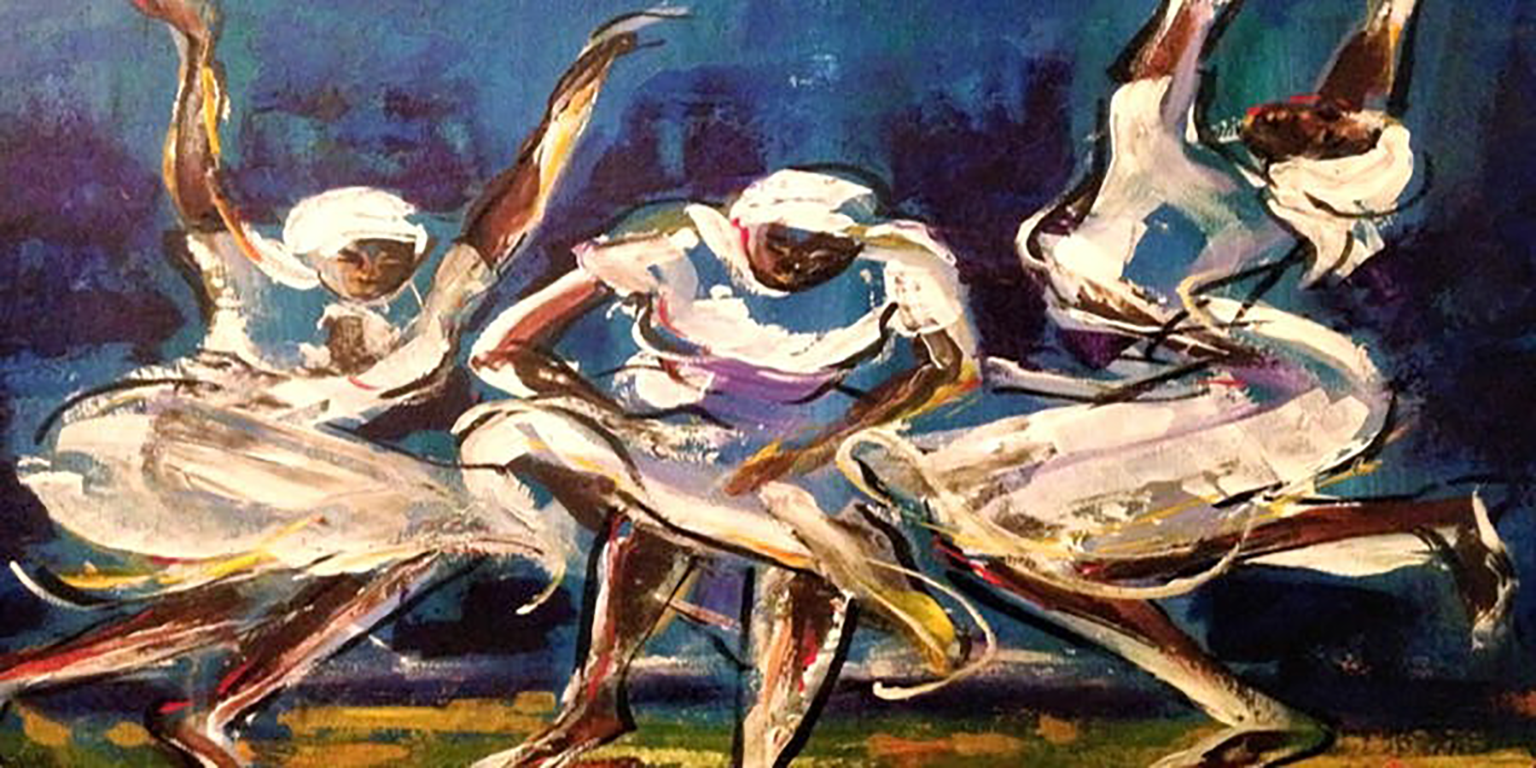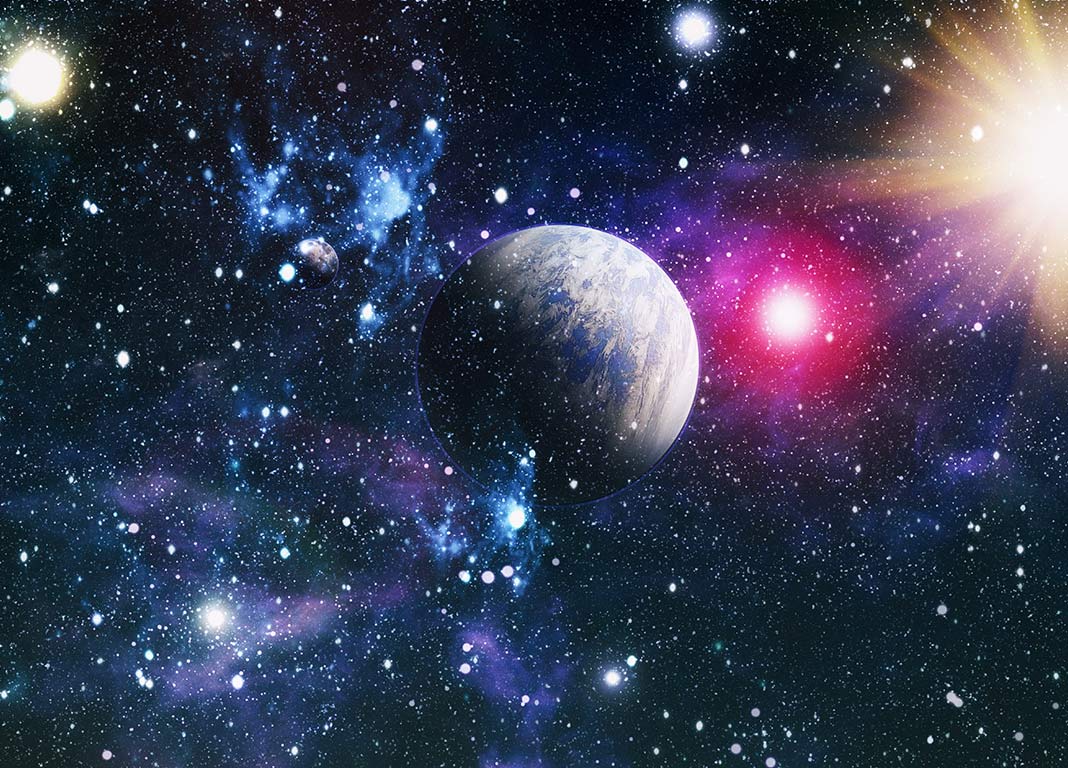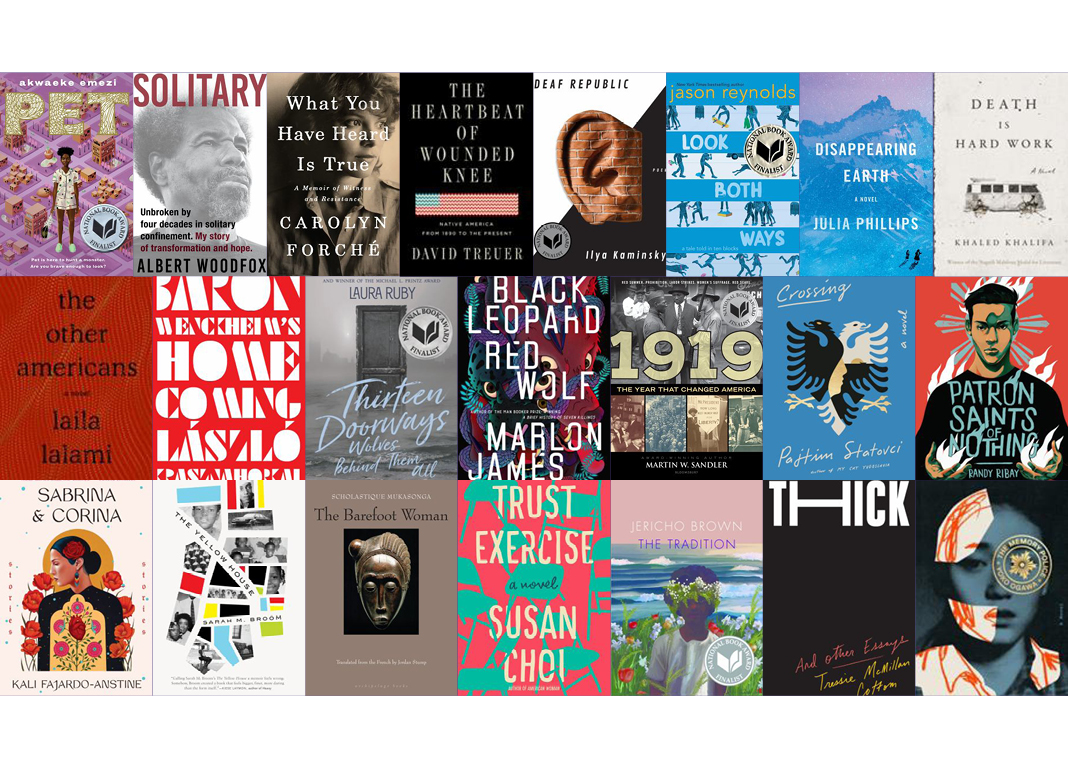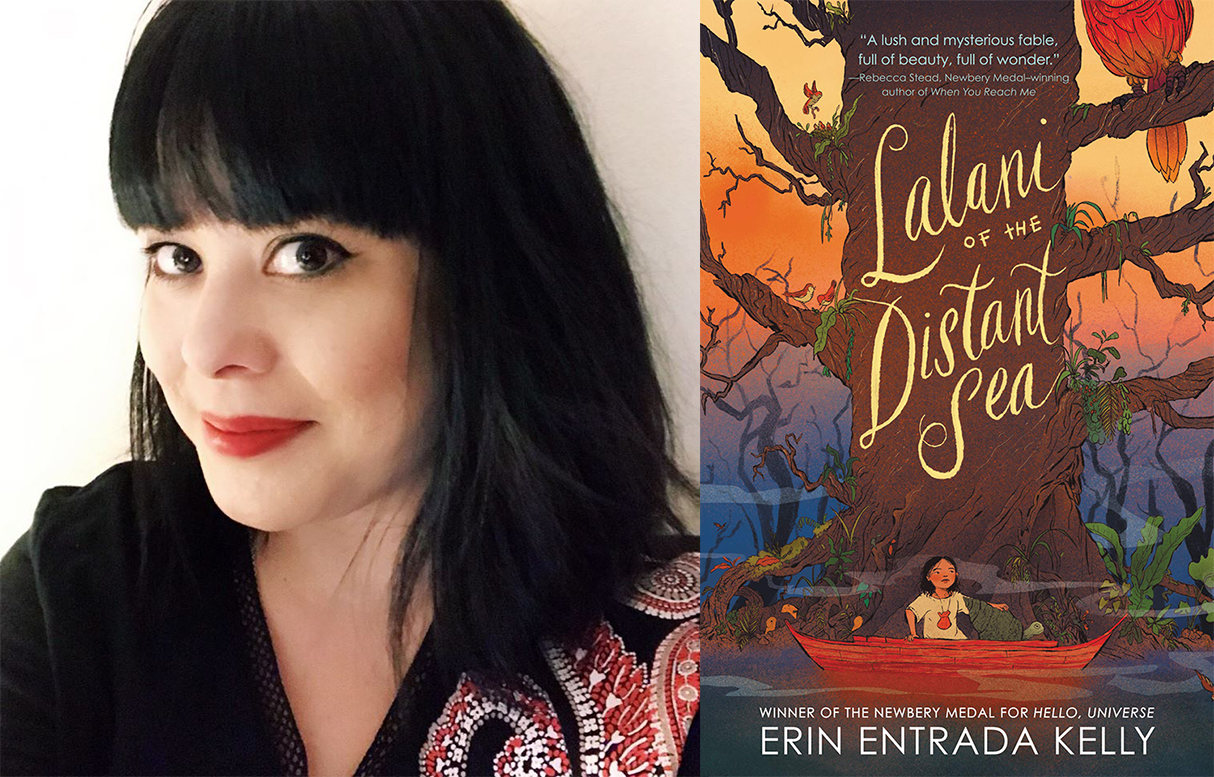Queens FEASTS is Queens Public Library’s FREE training program to provide knowledge, tools, and resources to people who want to start and run their own food businesses in Queens.
Several talented students have graduated from Queens FEASTS, and we’re very pleased to share their holiday recipes with you!
PS: Until this year, Queens FEASTS was known as Jamaica FEASTS. We also have graduates' recipes from last year, and we hope you will enjoy those too!
Sweet & Spicy Seasonal Chili
from Samantha “Chef Little Bit” Davis, Taste Buds Matter
“When I cook for myself, or for my customers, I often realize that it’s never a vegetable that we don’t like, but the way it was prepared,” says Samantha Davis, a private chef and caterer who specializes in vegetarian, vegan, kosher, gluten-free, and Rastafarian diets, as well as the food needs of older adults and children.
“This recipe’s flavor profile combines elements from many cultures, and it should be agreeable to anyone’s taste. (The peak season for sweet potatoes is late October through December!) Chili can be one of the best wholesome healthy meals, affordable and shareable. It’s universal, one meal that anyone can call their own. Please enjoy this recipe, and don’t be afraid to recreate it to your taste. My motto is: A recipe has no soul; as a chef, I must bring the soul to the recipe.”
Ingredients (serves 12)
- 1 sweet potato, diced into cubes
- 1 can kidney beans (15-16 oz., drained)
- 1 can chickpeas (optional; adds more fiber and protein)
- 1 can tomato sauce (8 oz.)
- 1 bunch cilantro, chopped
- 2 plum tomatoes, small diced
- 1 jalapeño, chopped
- 1 yellow onion, chopped
- 2 tablespoons olive oil
- 1 cup water
- Spices (to taste, and depending on your dietary needs): garlic power, cumin, chili power, oregano, basil, brown sugar
Directions
- In a medium saucepan, combine the oil, sweet potato, cilantro, and jalapeño. Cook on medium heat for 7 minutes.
- Add spices, and then add onions. Stir together. Let simmer on low heat for 5 minutes.
- Add all beans. Stir together. Cook on medium heat for 7 minutes.
- Add tomatoes and tomato sauce. Stir together, and season to taste.
- Add water, and let simmer on low heat for 20 minutes, or until it reaches your desired thickness.
- Adjust seasoning to your liking and serve with rice, quinoa, potato buns, or crackers.
Please prepare all recipes at your own discretion; Queens Public Library is not responsible for accidents, allergic reactions, or illnesses that occur because of preparation.
Posts in This Series
Margaret Wilkerson Sexton’s debut novel, A Kind of Freedom, was longlisted for the National Book Award in fiction in 2017. This year, she returns with a second novel, The Revisioners, which, like her first, is set in the South, where she’s from.
She never expected the nomination, saying she didn’t even know her book was eligible. Then she woke up one morning in her childhood home in New Orleans and discovered her Twitter was blowing up. This, she says, was unusual as she doesn’t tweet. She read one of the articles referencing her nomination to her husband, observing it as if it were an interesting possibility. The next thing she knew, her agent had called and the nomination became real to her.
Wilkerson Sexton was an attorney before she became a writer, always wanting to have something stable to fall back on financially. She was working at a law firm during the height of the recession when they began offering something called “Pursuits.” The program was intended to allow associates to leave without bringing on the stigma of massive layoffs. The idea, she explains, was that you’d take a year off, receive a portion of your salary, and pursue your real dreams. Wilkerson Sexton “sat on that offer for almost a year” before taking it, when her work morale was at its lowest, and she calls the decision the best thing she’s ever done.
Wilkerson Sexton’s new book tells of the connections between generations of women, and she notes that people are drawn to Josephine, one of the main characters. The author describes Josephine as someone sturdy, dependable, and spiritually sound–and she expresses a longing for someone with these qualities in her own life. Thinking about the character she created reminded her of her great grandmother, Margaret Miller, whom she never met but has heard stories about her whole life. “She is the one person I can point to who is most similar to this character I created. I wonder if subconsciously I based Josephine on her,” Wilkerson Sexton muses. In her own life, it’s her mother, aunts, and grandmothers who are the women who have shaped her.
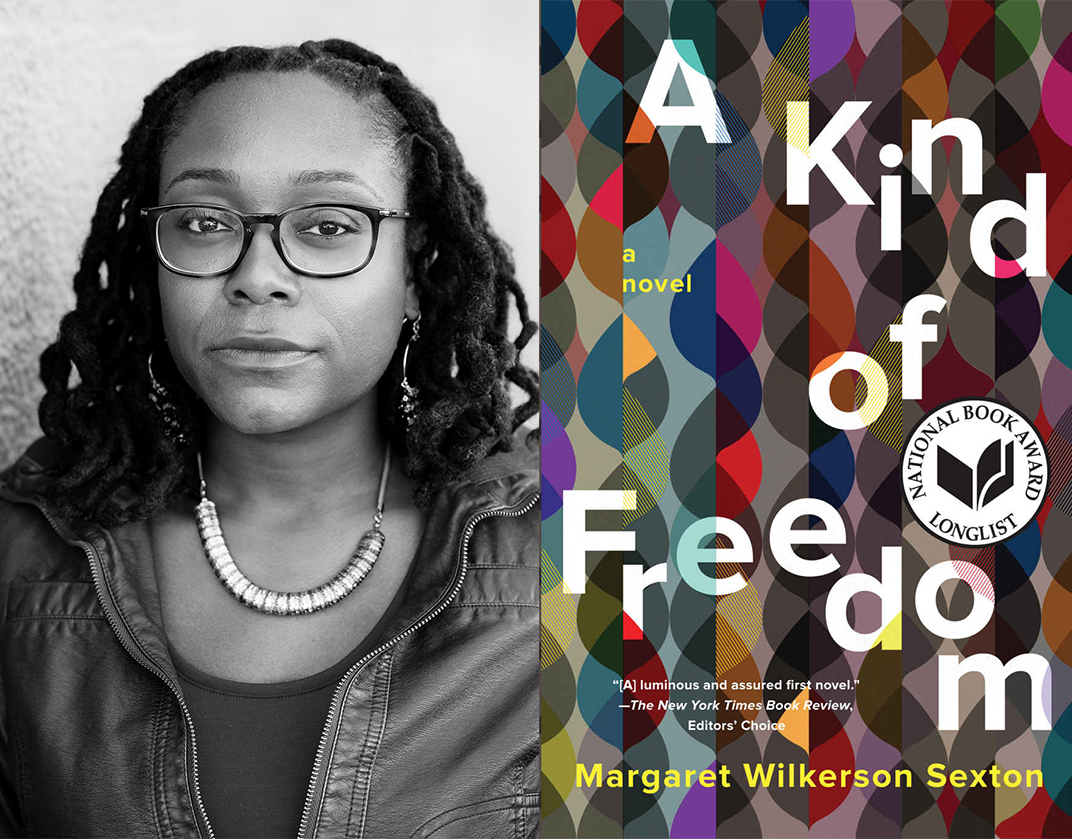
As a mother, she takes her own children to the library every week and is fascinated by what they bring home, what books speak to them, and how each book represents facets of their personality. “I love that they’re able to explore other worlds for a moment and then return the book, but that the world still lives with them,” she says. Growing up in New Orleans, she spent summers anywhere she could go within walking distance. One of the places she chose was the library across the street: “I always felt such a thrill walking in like so much promise lay ahead of me, like I could leave the place a different person almost, depending on what book I chose, what story I chose to inhabit. I still feel that way when I walk into a library.”
Wilkerson Sexton’s influences are many and diverse; Toni Morrison, Gloria Naylor, Edward P. Jones, Ernest Hemingway, Fyodor Dostoevsky, Eudora Welty, F. Scott Fitzgerald, William Faulkner, Octavia Butler, Jesmyn Ward, Yaa Gyasi, and Tayari Jones have all inspired her. Despite her books being set in the American South, she says that so far she hasn’t brought much of her own experiences to bear on the plots and characters of her novels. The plot points, she says, are in most cases drastically different, but that’s changing with a book she is working on now that draws heavily on her life.
The author advises readers to chase a dream. “There’s a reason it calls to you and there’s a reason you can’t stop thinking about it,” she says. For her, that dream was writing, which she explains saved her from herself: “All the issues that used to cause me so much angst, I feel like I can wrap inside a story now, and that gives it a life independent of mine, a purpose if you will; it takes so much of the charge off of my personal relationship with the problem. I think there’s something like that for everyone, some calling that will take the edge off and make the pain we go through in life somehow manageable and worthwhile.”
The Revisioners and A Kind of Freedom are both available now at Queens Public Library.
Top photo of Margaret Wilkerson Sexton by Melissa Schmidt; center photo by Ben Krantz.
Each year, up to 20 percent of Americans come down with the flu. While the exact timing varies, flu activity generally starts in October and November and peaks between December and February, sometimes extending to May.
The single best way to prevent the flu is to get the vaccine before flu season begins. The vaccine causes antibodies to develop about two weeks after receiving the shot, so you should aim to get your flu vaccine by the end of October, says pediatrician and immunization expert Dr. Melissa Stockwell, who shared with NewYork-Presbyterian’s Health Matters tips for how to prevent the flu this season.
1. I got a flu shot last year. Do I need another one this year?
Yes, you need to get an annual flu shot because its protectiveness wears off. You also need a new one at the beginning of flu season because we often have different strains that are potentially circulating from year to year. It takes about two weeks for the flu vaccine to reach effectiveness in the body. So, for your body to be protected once the flu hits your community, it’s really important that you get the flu vaccine now.
2. Will it make me sick? Can you get the flu from the vaccine?
No, you can’t get the flu from the vaccine. Side effects from the vaccine are generally mild. Some common side effects include soreness or redness at the injection site, fever, or an all-over achy feeling the next day. These generally go away on their own within a few days.
3. Are allergic reactions common with the flu shot?
Severe allergic reactions to flu vaccines are rare. We used to say that if you had an egg allergy you can’t get the flu vaccine. But that’s not true anymore. Most people with an egg allergy can get the regular flu vaccine, so ask your healthcare provider. If you have a severe egg allergy, make sure you get the flu shot in a medical setting where a healthcare provider can recognize and manage allergic reactions. Also, while the flu vaccine typically uses egg-based technology, manufacturers now make a vaccine that’s not made with egg.
4. How do experts come up with the flu shot?
Experts worldwide look at what the circulating flu virus strains were in the previous year and also look at flu cases across the globe, because in Australia, for example, our summer is their winter, which is when they experience flu season. They make the best educated guess on all the information out there and what they think the circulating flu virus strains are going to be, and then those are the strains they put in the vaccine. We all would love for there to be a universal flu vaccine so that we didn’t have to do this every year, and the best minds are working on it.
5. Can you still get the flu even if you get vaccinated?
The flu vaccine in general is about 40 to 60 percent effective, depending on the year, for a number of reasons. It could be because the flu strains in the vaccine weren’t a good match to that season’s flu virus or because the flu changed during the season. It could be because some people may have been exposed before they got vaccinated. Or, they could have gotten exposed within that two-week period after they got vaccinated but before the vaccine became effective. However, even when effectiveness may be, for example 40 percent, that’s still more effective than not getting vaccinated at all. So, if you don’t get vaccinated, your vaccine effectiveness is zero percent. There’s also some research showing that in people who get vaccinated and get the flu, they might have a less severe case of the flu. So, it’s still worth getting vaccinated.
6. In addition to the vaccine, what else should people do to prevent the flu?
While getting a flu shot is the single best way to prevent the flu, there are other things that people can do. The first is to wash your hands often to protect from germs. It is best to wash your hands for 20 seconds, which is equal to singing the Happy Birthday song twice through. If you don’t have soap and water available, use hand sanitizer. You should avoid close contact with people who are sick. It is also important to avoid touching your eyes, nose, or mouth. Finally, in general, it is important to get enough sleep, drink enough fluids, eat well, exercise, and manage your stress.
7. If you get the flu, what should you do to avoid spreading it to others?
If you are sick, it is important to protect your family and friends. You can do this by staying home from work, school, or other activities, and covering your mouth and nose with a tissue when sneezing or coughing, and then throwing the tissue out. Also make sure to clean and disinfect surfaces in your home that are frequently touched.
8. Does the flu vaccine nasal spray work as well as a flu shot?
Initially, there was good evidence that in kids the nasal spray was potentially more effective than the injectable vaccine because the way it was introduced to the body mimics that of the flu. What happened, though, was that the nasal spray lacked effectiveness against the 2009 H1N1 strain, which was the pandemic type. So they had to go back to the drawing board and try to figure out why it didn’t work, and they say they’ve solved the problem. This season, the American Academy of Pediatrics and the CDC expressed no preference for the shot or nasal spray. The nasal spray is for people ages 2 through 49; it shouldn’t be given to pregnant women or people with certain medical conditions.
9. Is the vaccine dangerous for children or pregnant women?
Since children and pregnant women are at very high risk of complications from the flu, it’s actually quite the opposite—they need to make sure that they get vaccinated. Babies six months and older should get the flu shot. Babies under six months have some protection if their mom got vaccinated while pregnant, which is another reason it’s really important for pregnant women to get the flu shot. It is also important to “cocoon” babies by vaccinating people who will be around them and could potentially pass on the flu to them.
10. Do children need multiple flu shots to be fully protected?
Kids who are six months through eight years old may need two shots in a season depending on how many shots they’ve gotten before. A child in this age group getting vaccinated for the first time, or who has received only one flu vaccine in his or her lifetime, will need two shots, generally one month apart, to be protected for that flu season. It is really important that families come back and get that second dose. We know that nationally only about half of kids who need that second dose actually come back and get it. That’s a problem because kids really aren’t protected unless they get those two doses if they’re in that age category and they haven’t had enough previous vaccinations.
Melissa Stockwell, MD, MPH is an associate attending pediatrician at NewYork-Presbyterian’s Ambulatory Care Network and the medical director for the NewYork-Presbyterian Hospital Immunization Registry, called EzVac. She is also an associate professor of pediatrics and population and family health at Columbia University Vagelos College of Physicians and Surgeons as well as director of the Center for Children’s Digital Health Research and associate vice chair of clinical and health services research, both in the Department of Pediatrics.
This article first appeared on NewYork-Presbyterian’s Health Matters at healthmatters.nyp.org.
Tuesday, November 5, 2019 is Election Day, and several of our branches will serve as polling sites.
Queens residents will cast their votes at the Briarwood, Central, Elmhurst, Forest Hills, Kew Gardens Hills, Lefferts, Lefrak City, North Forest Park, Peninsula, Ridgewood, Seaside, St. Albans, and Woodside libraries, from 6AM to 9PM.
Is your library where you should vote? Please visit https://nyc.pollsitelocator.com/search or call 866-VOTE-NYC (866-868-3692) to confirm the correct location for you to vote in your neighborhood!
Frederick Douglass was one of the greatest abolitionists, known for his powerful oratory. David W. Blight, author of a new biography of Douglass and winner of the Pulitzer Prize, will visit Flushing Library on Saturday, November 16 at 2pm. Register for his talk at davidwblight.eventbrite.com. His book, Frederick Douglass: Prophet of Freedom, is available now at Queens Public Library. This conversation is courtesy of Simon & Schuster, the book’s publisher.
Q. Can you discuss the tension the aging Douglass experienced as he made the transition from radical outsider to political insider and symbolic figure of great fame?
Few radical reformers in history live to see their causes triumph, and then also live long enough to become a political insider within the government or a system they had fought to overthrow, destroy, and reinvent. Nelson Mandela comes to mind. Vaclav Havel and many other Eastern European leaders after the fall of the Soviet Union and the Berlin Wall also come to mind. Some of America’s major Civil Rights leaders who later became major office holders also are good examples. Douglass is the greatest example of this phenomenon in the 19th century. In his case this meant becoming a loyal advocate of the Republican Party for thirty years as it decisively changed from the party of emancipation and the 13th, 14th, and 15th Amendments to the party of big business and the retreat from the egalitarian transformations of Reconstruction.
Douglass became an office holder (by appointment, not election), he became often a symbol as much as an actual political leader. Douglass always had to live up to expectations of performing as the black leader, the voice of the freedpeople, the former slave who had to prove the capacities of black people. But above all Douglass also became in the final thirty years of his life, 1865-1895, a patriarch of a huge extended family of three sons, one daughter, and twenty-one grandchildren. Along with his two wives over time, these kinfolk all became to one degree or another financially dependent on Douglass. Living in Washington, his family emerged as a kind of black first family in the District of Columbia press. Douglass, therefore, lived with an acute problem of “fame,” in all its positive and negative aspects.
Q. How would you characterize Douglass’s legacy today? What lessons could we all—political leaders, cultural leaders, and active citizens—take from his life and work?
Douglass delivers many legacies to us today in the 21st century, both from the trajectory of his life and from his ideas and writings. He is first one of the best examples ever of a person who led by language, a genius with words whose oratory and writing provide the primary reasons we know him. Second, Douglass delivered over and over a critique of America as a slave society that had to be dismembered and destroyed before being recreated around the idea of human equality. Third, Douglass’s writings, especially in the autobiographies, constitute the most compelling descriptions and analysis of the nature and meaning of American slavery crafted by any American. Fourth, on a personal level, for anyone who has ever experienced despair, captivity, oppression in many forms, displacement, isolation of the soul, or legal and political denial, Douglass’s story, and his writings, offer a deep well of hope and inspiration.
Fifth, Douglass might have given up on the cause of abolition, of emancipation, of U.S. victory in the Civil War, or of the endurance of the triumphs for black rights in Reconstruction. But he never truly gave up. That alone gives his life and thought lasting use and significance. Sixth, Douglass was a great editor, writer, speaker. He was an organizer, a creator of and believer in social protest movements. All who seek social and political change or transformation do well to examine Douglass’s example. Seventh, Douglass remains a classic model of political pragmatism grown out of radicalism. His story shows us over and again that all revolutions will lead to counter-revolutions. A true reformer has to keep a long view of history, and try to fashion the most effective and not always the most radical method of change.
Eighth, Douglass not only lived a heroic life in his escape from slavery and the remaking of himself in freedom; he became a major thinker—about the nature of history, about the natural rights tradition, about political and constitutional philosophy, about the elements of morality in human nature. Ninth, Douglass has a great deal to tell us eternally about what it means to be an American, and about how the issue and history of race stands at the center of that question. And tenth and finally, but not least, Douglass’s world view, sense of history, and his gripping talent for storytelling rested deeply in his reading and use of the Bible, especially the Old Testament. Just why Americans in the nineteenth century were so steeped in Biblical story and metaphor is beautifully and powerfully on display in Douglass life and work.
David W. Blight is the Sterling Professor of History and Director of the Gilder Lehrman Center for the Study of Slavery, Resistance, and Abolition at Yale University. He is the author or editor of a dozen books, including Frederick Douglass: Prophet of Freedom; American Oracle: The Civil War in the Civil Rights Era; and Race and Reunion: The Civil War in American Memory; and annotated editions of Douglass’s first two autobiographies. He has worked on Douglass much of his professional life and been awarded the Pulitzer Prize for History, the Bancroft Prize, the Abraham Lincoln Prize, and the Frederick Douglass Prize, among others.
Photo of David W. Blight courtesy of Huntington Library, San Marino, California.
On September 24, Queens Public Library President and CEO Dennis M. Walcott, Board of Trustees Chair Haeda Mihaltses, Mayor Bill de Blasio, Queens Borough President Melinda Katz, NYC Council Member Jimmy Van Bramer, NYS Senator Michael Gianaris, NYS Assemblywoman Catherine T. Nolan, NYS Assemblywoman Aravella Simotas, Deputy Mayor Laura Anglin, NYC Department of Design and Construction (DDC) Commissioner Lorraine Grillo, and hundreds of QPL staff and volunteers, community leaders, and members of the public celebrated the grand opening of Hunters Point Library.
Hunters Point is the first new QPL branch since 2007 and the system’s 66th location. Designed by Steven Holl Architects, the 22,000-square-foot building—known for its distinctive modern shape and appearance—offers a collection of more than 50,000 books, periodicals, and other materials, including several thousand items in Chinese and in Spanish.
Hunters Point also has adult, teen, and children’s areas, desktop and laptop computers for the public, a Percent for Art installation by artist Julianne Swartz, and a ground floor meeting room that can seat up to 140 people.
Inside the library, warm bamboo creates an inviting space for visitors, and natural light enters through the large glass cut-outs in the sides of the building, offering spectacular views of the East River, the United Nations, and the east side of Manhattan on one side and the growing community of Long Island City on the other. Hunters Point Library is designed to achieve LEED Silver certification for environmental sustainability and will host QPL’s first-ever environmental education center, offering programs for all ages.
The opening ceremony featured students from PS/IS 78Q greeting guests in ten languages plus a band from Hunters Point Community Middle School entertaining guests. A boat from the New York City Fire Department (FDNY) provided a water show from the East River after the ribbon-cutting at the library’s main entrance.
Guests spoke about the dedication and support of the Library’s partners in city and state government, the hard work of the NYC Department of Design and Construction, and the advocacy of generations of community members in the Long Island City community, like the late Fausta Ippolito, that helped make the library possible.
“We are incredibly grateful for the teamwork, talent, and tenacity of library staff, government agencies, elected officials, and the community that brought this spectacular building to life,” said President Walcott.
“We cannot wait to serve everyone who visits this library,” said Hunters Point Library Manager Euni Chang. “Our doors are open to you, to help you and collaborate with you in creating a welcoming center of community. We are here for you. This is your place.”
“Hunters Point now has a library that matches the vibrancy of the community. With an early childhood play area, environmental center, and books in many languages, it will serve as a resource for generations to come,” said Mayor de Blasio.
In the two hours that Hunters Point Library was open on September 24, we welcomed 1,355 visitors and circulated 840 items—that’s seven items a minute! Nearly 3,000 guests joined us on the first weekend Hunters Point was open for a Community Day featuring storytime, face painting, and science activities. By the end of the library’s first week of operation, we had more than 11,000 visits. We look forward to seeing you at Hunters Point.
Forbidden Gathering by Gina Samson.
Queens Public Library will be hosting an eight-week Caribbean Arts Festival featuring artists from as far away as Bangladesh and Argentina and as close as Queens.
The festival will take place at nine branches: Cambria Heights, Central, Douglaston/Little Neck, Hollis, Laurelton, Rochdale Village, Rosedale, St. Albans, and South Hollis.
Three years ago, the library had Festival an Koulè, an exhibit of the vibrant Haitian art of Queens. This year’s exhibition is being organized by QPL staff in partnership with the Friends of Queens Public Library. Reginald St. Fort, who is the manager of South Hollis Library, is curating and co-directing with co-director Florence Palomo, a librarian at Hollis Library.
The festival kicks off with an opening reception on Saturday, November 16 from 6-10 pm at Cambria Heights Library. An art exhibition will run at all nine branches through January 2020.
Camille T. Barrett, QPL’s assistant director of government and community affairs, says that she hopes the festival will give customers the opportunity to experience great art in their own communities without traveling to museums in Manhattan.
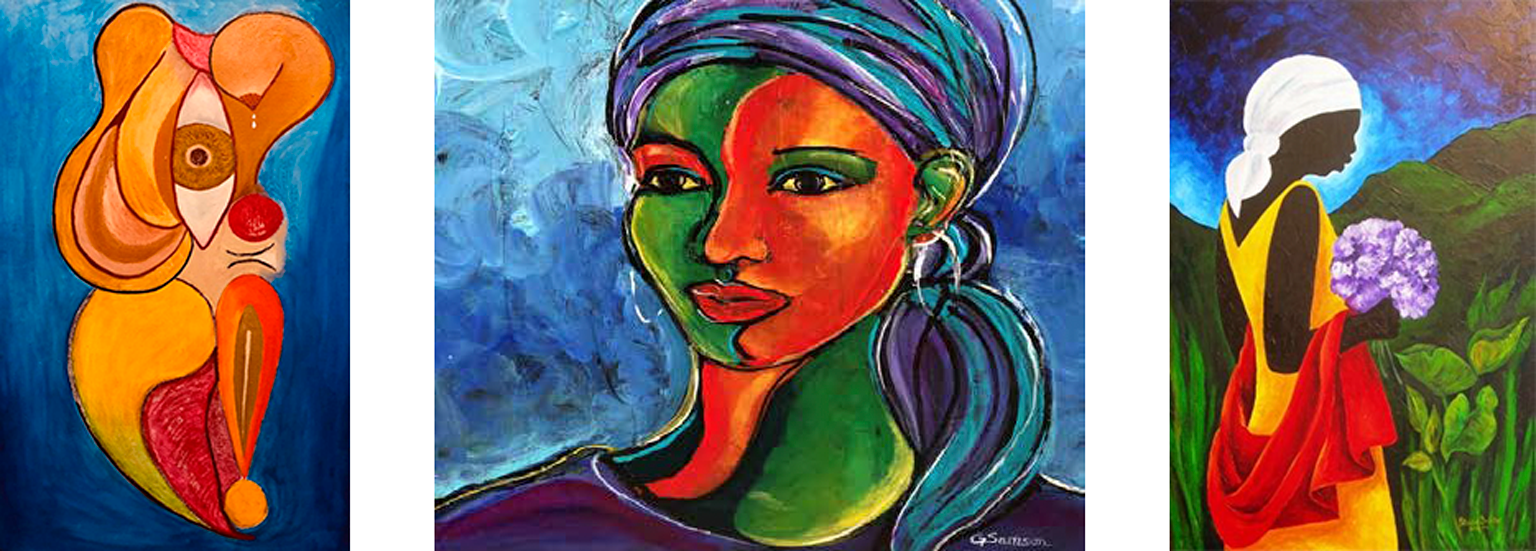
From left to right: Konvesation by Reginald St. Fort; Contrast by Gina Samson; Lilacs for Mamiche by Patricia Brintle.
The festival’s art exhibition will be complemented by lectures, workshops by the artists, and films, as well as interviews of the artists that will be collected by the Queens Memory Project and by teens at Cambria Heights. Events during the festival will include mask-making, a lecture on Haitian painting, sip and paint, bowling, a documentary series, and a Kwanzaa celebration.
Each branch’s art display will have a theme, including history, religion, and different styles of art, from impressionist to abstract to surreal. Artists from Trinidad, Haiti, and Jamaica will participate, in addition to numerous artists from around the world.
St. Fort says that the Caribbean is a “microcosm of this planet” with influences as far ranging as French, Spanish, British, East Indian, Chinese, African, and European. “People of all shades and colors” make up the region, he explains, part of the inspiration for the festival’s title Migration of Colors, which also refers to the diverse artwork created there.
In addition to exposing local talent and heritage, St. Fort hopes Migration of Colors provokes people to see the library in a different light. As St. Fort says, the festival is a way to “try to highlight the role of the library and create outreach. Each artist has followers who may not have been to the library. This is a way to introduce them to libraries and our wonderful programs and services.” He also hopes that customers will travel between locations—for example, from St. Albans to Douglaston/Little Neck or from Rosedale to Cambria Heights—to see the different artwork on display.
Learn More about all of the festival's special programs and events, and visit each participating library location to see all the wonderful art!
Join us on Saturday, November 9 to celebrate the grand opening of the Discover Exoplanets exhibit for the entire family. The exhibit will be on display at Central Library until January 27.
Discover Exoplanets features multimedia activities where visitors can build their own solar systems, see the most recent NASA discoveries, learn about whether popular TV shows and movies feature facts or fiction, and much more.
On November 9 from 11am-3pm, blast off to the far reaches of the universe. The Discovery Team and the Intrepid Sea, Air, and Space Museum will have a stellar array of space-related activities. It’s sure to be out of this world.
At 2pm, the ScienceTellers will be presenting "Tales of Alien Visitors." During a midnight meteor shower, something mysterious falls from the sky toward Earth. It’s not a shooting star. Two curious kids investigate and find themselves mixed up with a family of visitors from another planet (an exoplanet?)! They risk everything to rescue the aliens and get them back to their spaceship—before it’s too late! Don’t miss this action-packed and educational alien adventure using science experiments for special effects.
There will be events through January, including:
Saturday Science Lab
School-age boys and girls up to age 12 are invited to join us (almost) every week for Saturday Science Lab! This exciting and educational program lets kids not only learn, but actually perform amazing science experiments. No registration is required for this activity.
Saturdays, November 2, 16, 23, 30, December 7, 14, 21, 28
11am-12:30pm
Central Library
Intrepid, Sea, Air & Space Museum Program: Cosmic Colors
Create your own deep space pictures using real data from the Hubble Space Telescope, and learn about some of Hubble’s instruments and what they tell us about the farthest reaches of space. This is for grades K-6. Seating is limited; first-come, first-served.
Wednesday, November 20
4:30pm
Central Library's Children's Library Discovery Center (CLDC)
Intrepid, Sea, Air & Space Museum Program: Poof! Where Does Space Begin?
Poof! Where does “space” begin? How far away is the moon? Where did the space shuttles go? These questions and more will be answered as you discover the importance of Earth’s atmosphere and why astronauts need to wear spacesuits. Presented by the Intrepid Sea, Air and Space Museum. Seating is limited; first-come, first-served.
Wednesday, December 11
4:30pm
Central CLDC
Intrepid, Sea, Air & Space Museum Program: Out of This World (Exoplanets and More)
Water worlds, icy planets, or lots of hot air: all planets have unique characteristics. By studying planets around other stars, scientists find those that could harbor life. Art meets science: students will use colored pencils and other materials to design an exoplanet. This is for kids ages kindergarten to twelfth grade and families are welcome. Limited seating; first-come, first-served.
Monday, January 6
4:30pm
Central CLDC
Scientist Talk with Moiya McTier, Astrophysicist
Meet Columbia University scientist Moiya McTier. She will speak about her pathway into science, her research about exoplanets, citizen science projects, using the scientific method in your daily life, and how we can all get more involved in science. Everyone is welcome!
Saturday, January 11
2pm
Central Library Plaza
The National Book Awards finalists have been announced—how many can you read before the winners are announced on November 20? Five finalists have been chosen in each of five categories: fiction, nonfiction, poetry, translated literature, and young people's literature. Discover and request these great books at Queens Public Library!*
*“I”: New and Selected Poems, Be Recorder and Sight Lines are not currently available for request, but are coming soon.
Fiction:
Susan Choi, Trust Exercise
Kali Fajardo-Anstine, Sabrina & Corina: Stories
Marlon James, Black Leopard, Red Wolf
Laila Lalami, The Other Americans
Julia Phillips, Disappearing Earth
Nonfiction:
Sarah M. Broom, The Yellow House
Tressie McMillan Cottom, Thick: And Other Essays
Carolyn Forché, What You Have Heard Is True: A Memoir of Witness and Resistance
David Treuer, The Heartbeat of Wounded Knee: Native America from 1890 to the Present
Albert Woodfox with Leslie George, Solitary
Poetry:
Jericho Brown, The Tradition
Toi Derricotte, “I”: New and Selected Poems
Ilya Kaminsky, Deaf Republic
Carmen Giménez Smith, Be Recorder
Arthur Sze, Sight Lines
Translated Literature:
Khaled Khalifa, Death Is Hard Work
László Krasznahorkai, Baron Wenckheim’s Homecoming
Scholastique Mukasonga, The Barefoot Woman
Yoko Ogawa, The Memory Police
Pajtim Statovci, Crossing
Young People’s Literature:
Akwaeke Emezi, Pet
Jason Reynolds, Look Both Ways: A Tale Told in Ten Blocks
Randy Ribay, Patron Saints of Nothing
Laura Ruby, Thirteen Doorways, Wolves Behind Them All
Martin W. Sandler, 1919 The Year That Changed America
For Newbery Medal recipient Erin Entrada Kelly, reading isn’t only entertainment or a diversion. It literally saved her life.
The author explains that she has suffered from chronic depression her entire life: “Without books, I would have felt so much more alone than I already did. Opening a book is like coming home.”
Kelly’s elementary school library in Louisiana played an important role in her life. She discovered two of her favorite childhood books there, Sideways Stories from Wayside School by Louis Sachar and Halfway Down Paddy Lane by Jean Marzollo, checking them both out so many times that she knew exactly where they were on the shelf.
One of the things she loves about the area where she lives now in Delaware is the library system. “My local library is also my favorite writing spot,” she says. “I tuck myself away at one of the tables near the windows and write, write, write.”
Kelly believes strongly in the power of libraries and the importance of their presence in communities. Her writing process only begins after she’s spent months thinking about a fictional world in her head—then, she gets out a notebook and writes longhand. Only when she’s completed that does she type up her work, print it out, and complete edits on the page.
She was an avid reader from an early age and realized at about eight years old that she could write her own books. In addition to being an author, Kelly teaches writing. “Being around other writers builds creative energy, and I thrive on creative energy,” she tells us.
Her new book Lalani of the Distant Sea was influenced by the rich, complex tapestry of Filipino folklore. As she explains, “Filipino folklore is rooted in nature, and it’s wonderfully and incredibly dark, which is certainly true of the book.” Still, she says the world of the book doesn’t directly parallel folklore, as it comes from her imagination. Kelly recommends the Aswang Project for readers who are interested in Filipino folklore.
Kelly is inspired by a wide range of authors and books, including When You Reach Me by Rebecca Stead, “in which there is not a single wasted word,” The One and Only Ivan by Katherine Applegate, “which breaks your heart and stitches it up again,” Zeroboxer and Jade City by Fonda Lee “for her mind-blowing world-building,” Kevin Henkes’ The Year of Billy Miller “for its subtlety and truth,” The Underneath by Kathi Appelt, one of the most lyrical and atmospheric books she’s ever read, The Prince and the Dressmaker by Jen Wang “for its management of art, theme, and prose,” and A.S. King’s Dig and I Crawl Through It. Kelly admires that King doesn’t condescend to her audience and acknowledges that young people are far more complex than adults give them credit for.
Choice in reading is freedom, she says. What she wants all of her readers to know is that they are never alone.
Lalani of the Distant Sea is available now at Queens Public Library.

